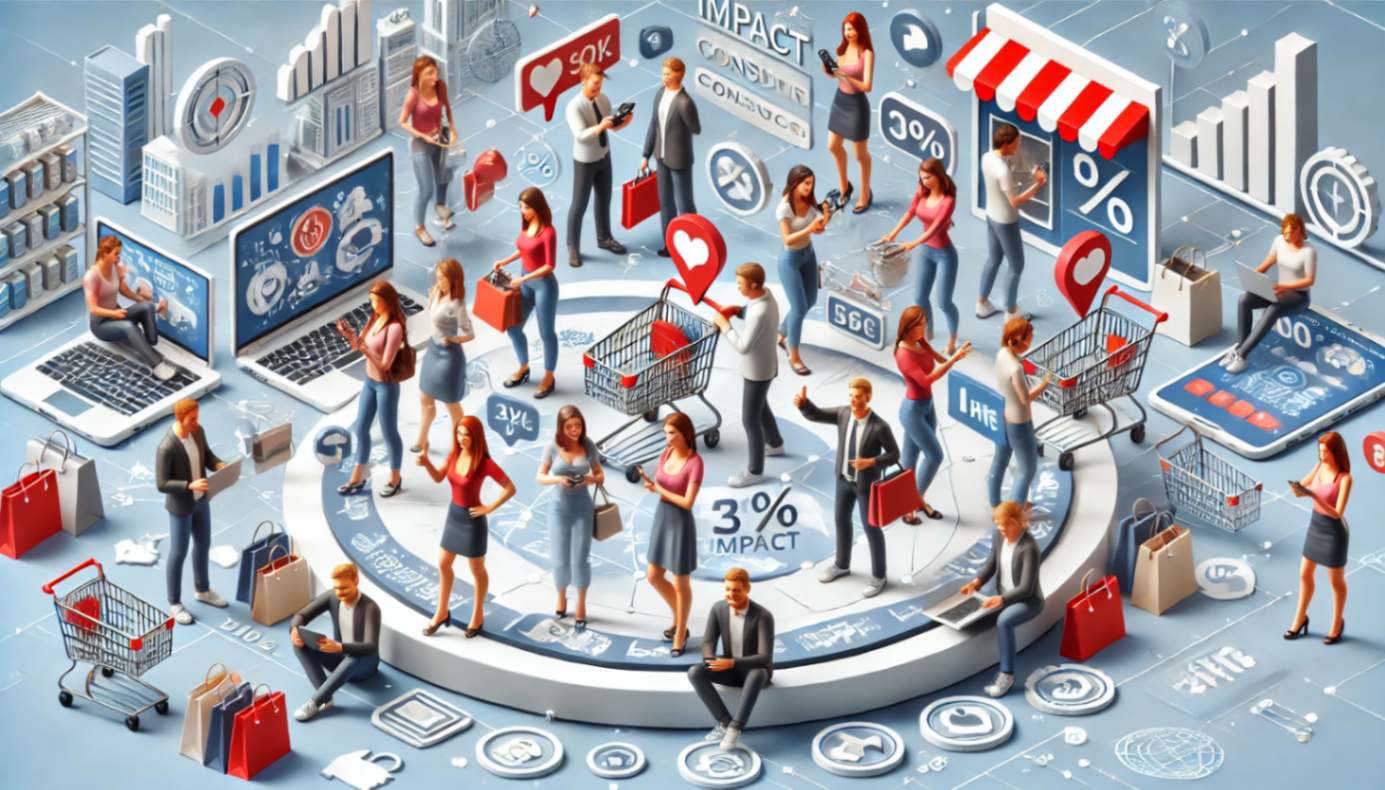The financial world is buzzing with excitement and confusion over the latest news: the US Non-Manufacturing PMI has hit a record high. This surge has left everyone from investors to analysts asking, “What does this mean for the economy?” Let’s dive deep into this topic, breaking down what it all means, and explore the varied industry reactions making headlines.
What is the US Non-Manufacturing PMI?
The US Non-Manufacturing PMI, or Purchasing Managers’ Index, is a crucial economic indicator that reflects the performance of the service sector. Unlike its manufacturing counterpart, the Non-Manufacturing PMI focuses on industries such as finance, insurance, real estate, and more. But why is it so important? Simply put, the service sector makes up a substantial portion of the US economy, and its health can tell us a lot about the overall economic condition.
Why the Record High Matters
Seeing the PMI hit a record high is akin to watching your favorite sports team win the championship – it’s exhilarating, but it also raises a lot of questions. For one, a high PMI indicates expansion and growth, which sounds great, right? But on the flip side, it also brings concerns about inflation and whether this growth is sustainable in the long run.
Breaking Down the Numbers
Let’s talk specifics. The latest PMI reading soared past previous records, reaching an unprecedented level. This wasn’t just a small uptick; it was a significant leap that took many by surprise. Economists had predicted growth, but not to this extent. So, what exactly fueled this rise?
Key Drivers Behind the Surge
Several factors contributed to this unexpected spike. The easing of pandemic restrictions played a significant role, allowing businesses to resume operations and consumers to spend more freely. Additionally, government stimulus packages injected much-needed capital into the economy, spurring demand in various sectors. Let’s explore these drivers in more detail:
Pandemic Recovery
The COVID-19 pandemic brought the world to a standstill, and the service sector was hit particularly hard. With the easing of restrictions, businesses could reopen, and consumers were eager to return to normalcy. This pent-up demand resulted in a surge in economic activity, which was reflected in the PMI numbers.
Government Stimulus
Government stimulus packages provided a significant boost to the economy. Direct payments to individuals, enhanced unemployment benefits, and support for businesses all contributed to increased spending. This influx of money into the economy helped drive demand across various sectors.
Consumer Behavior Shifts
The pandemic also changed consumer behavior. People who were confined to their homes began spending on services they had missed, such as dining out, travel, and entertainment. This shift in spending patterns contributed to the surge in the Non-Manufacturing PMI.
Industry Reactions: The Good, the Bad, and the Ugly
Whenever there’s a significant economic shift, reactions are mixed. Here’s a look at how different sectors are responding to the news.
Optimism in the Financial Sector
Financial institutions are generally optimistic. Banks and investment firms see this as a sign of economic recovery and growth opportunities. Increased consumer spending means more transactions, loans, and investment activity – all good news for their bottom line. They are excited about the potential for increased profits and expansion.
Concerns in Real Estate
The real estate market, however, is more cautious. While a growing economy typically boosts housing demand, the specter of rising interest rates looms large. Higher rates could dampen the housing market’s momentum, making it more expensive for consumers to borrow. Real estate professionals are worried that this could lead to a slowdown in home sales and new construction projects.
Retail and Hospitality: A Mixed Bag
The retail and hospitality sectors are experiencing mixed emotions. On one hand, more spending means more customers. On the other, supply chain disruptions and labor shortages are significant headaches that could hinder their ability to meet this rising demand. Retailers and hoteliers are excited about the increase in consumer activity but are also anxious about the challenges they face in keeping up with demand.
The Shadow of Inflation
No discussion about economic growth is complete without mentioning inflation. As the PMI rises, so do concerns about the prices of goods and services. Inflation can erode purchasing power, making everything from groceries to gas more expensive. It’s a delicate balance – too much growth can fuel inflation, but too little can stymie recovery.
The Federal Reserve’s Dilemma
The Federal Reserve is like a tightrope walker, trying to balance growth and inflation. With the PMI hitting a record high, the Fed faces increased pressure to raise interest rates. But doing so too quickly could stall the recovery, creating a precarious situation. The Fed’s decisions in the coming months will be crucial in determining the direction of the economy.
Small Businesses: A Rollercoaster Ride
Small businesses are on a rollercoaster ride. While the surge in economic activity brings more customers, it also means higher costs for supplies and wages. Many small business owners find it challenging to navigate these choppy waters. They are optimistic about the increased demand but are also concerned about their ability to keep up with rising costs.
Consumer Confidence: High But Fragile
Consumers feel more confident, but this confidence is fragile. High PMI readings suggest that people are spending more, but there’s an underlying worry about how long this can last. If prices keep rising, consumer confidence could take a hit. Consumers are enjoying the current economic environment but are wary of potential future challenges.
Global Implications
What happens in the US doesn’t stay in the US. A record-high PMI has global implications. Other countries watch the US economy closely, and this surge could influence global markets, trade policies, and economic strategies worldwide. International investors and policymakers are paying close attention to the developments in the US.
Long-Term Sustainability: A Big Question Mark
Is this record-high PMI sustainable? That’s the million-dollar question. Some experts believe the current growth is a post-pandemic rebound that will level off. Others think it could lead to a more prolonged period of expansion. Only time will tell. Analysts are divided on whether this surge is a temporary spike or the beginning of a new economic trend.
The Road Ahead: What to Watch
As we move forward, several factors will be critical to watch. Inflation rates, Federal Reserve policies, and global economic conditions will all play pivotal roles in determining whether this PMI high is a flash in the pan or the start of a new trend.
Inflation Rates
Monitoring inflation rates will be crucial. If inflation continues to rise, it could prompt the Federal Reserve to take more aggressive action, such as raising interest rates. This could have a cooling effect on the economy.
Federal Reserve Policies
The Federal Reserve‘s policies will be closely watched. How quickly and aggressively the Fed acts to control inflation will have significant implications for the economy. Their decisions will impact everything from borrowing costs to investment activity.
Global Economic Conditions
Global economic conditions will also play a role. The interconnected nature of the world economy means that developments in other countries can have ripple effects in the US. Trade policies, geopolitical tensions, and international economic trends will all be factors to consider.
Sector-Specific Reactions
Let’s take a closer look at how specific sectors are reacting to the record-high PMI.
Technology
The technology sector is thriving. The surge in economic activity has increased demand for tech products and services. Companies are investing in new technologies to improve efficiency and meet customer demand. However, supply chain disruptions remain a concern.
Healthcare
The healthcare sector is experiencing a mix of optimism and caution. Increased economic activity has led to higher demand for healthcare services. However, the ongoing pandemic and rising costs are challenges that healthcare providers must navigate.
Energy
The energy sector is benefiting from increased demand for energy. Higher economic activity means more energy consumption. However, concerns about environmental impact and regulatory changes are on the horizon.
Transportation
The transportation sector is seeing increased activity as people travel more and businesses require more logistics services. However, rising fuel costs and supply chain issues are challenges that the industry must address.
The Impact on Employment
The record-high PMI has implications for employment. Increased economic activity typically leads to job growth. However, labor shortages and rising wages are concerns for many businesses. Employers are facing challenges in finding and retaining skilled workers.
Small Business Challenges
Small businesses are feeling the impact of the record-high PMI in various ways.
Increased Demand
Small businesses are experiencing increased demand for their products and services. This is a positive development, but it also comes with challenges.
Rising Costs
The costs of supplies and wages are rising, putting pressure on small business owners. Many are finding it difficult to balance the increased demand with higher operating costs.
Labor Shortages
Labor shortages are a significant challenge for small businesses. Finding and retaining skilled workers is proving to be difficult. This is impacting their ability to meet customer demand.
The Consumer Perspective
From the consumer’s perspective, the record-high PMI brings both positives and negatives.
Increased Spending
Consumers are spending more, which is a positive sign for the economy. They are confident and willing to make purchases they may have deferred during the pandemic.
Rising Prices
However, rising prices are a concern. Inflation is eroding purchasing power, and consumers are feeling the pinch at the checkout counter.
Investment Opportunities
The record-high PMI presents investment opportunities, but it also comes with risks.
Stock Market
The stock market has reacted positively to the news. Investors see the high PMI as a sign of economic strength and are investing accordingly. However, the potential for inflation and rising interest rates adds an element of risk.
Real Estate
The real estate market is a mixed bag. On one hand, economic growth is driving demand for housing. On the other hand, rising interest rates could make borrowing more expensive, potentially cooling the market.
The Role of Innovation
Innovation will play a critical role in navigating the challenges and opportunities presented by the record-high PMI.
Technology
Technological advancements can help businesses improve efficiency and meet rising demand. Companies that invest in innovation are better positioned to thrive in this environment.
Sustainability
Sustainability is becoming increasingly important. Businesses that adopt sustainable practices can reduce costs and appeal to environmentally conscious consumers.
Conclusion
In the grand scheme of things, the US Non-Manufacturing PMI hitting a record high is a significant milestone. It signals growth and recovery but also brings a host of challenges and uncertainties. From the Federal Reserve’s policies to small business struggles, the implications are vast and varied. As we navigate this complex economic landscape, staying informed and adaptable will be key.
FAQs
1. What is the US Non-Manufacturing PMI?
The US Non-Manufacturing PMI is an economic indicator that measures the performance of the service sector, which includes industries like finance, insurance, and real estate.
2. Why is a record-high PMI significant?
A record-high PMI indicates strong growth and expansion in the service sector, which is a substantial part of the US economy. It suggests increased economic activity but also raises concerns about inflation.
3. How does a high PMI affect small businesses?
While a high PMI can bring more customers and opportunities for growth, it also means higher costs for supplies and wages, creating challenges for small business owners.
4. What role does the Federal Reserve play in this scenario?
The Federal Reserve balances economic growth and inflation. With a record-high PMI, the Fed may face pressure to raise interest rates to control inflation, but doing so could slow down the recovery.
5. Are there global implications to the US PMI hitting a record high?
Yes, the US economy significantly influences global markets. A record-high PMI in the US can affect global trade policies, economic strategies, and market dynamics worldwide.










